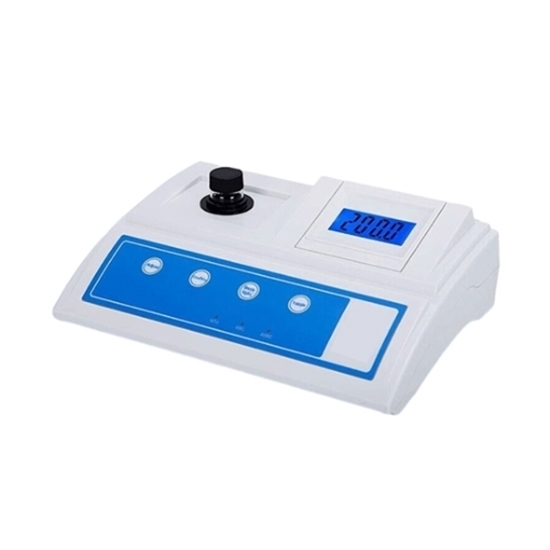
- Stock: In Stock
- Model: RDDLZ-BTM-20A
- Weight: 1.00
- SKU: RDDLZ-BTM-20A
Available Options
Buy low-price digital turbidity meter online, equipped with stable circuit system and high-efficiency and long-life light source, it can work stably for a long time. RDDLZ benchtop turbidity meter offers a wide range of applications, suitable for various industries including water treatment, environmental monitoring, and research laboratories.
Specification
- Model: RDDLZ-SGZ-20A
- Measuring Principle: 90° Scattered Light
- Measuring Range: 0-20 NTU
- Working Voltage: 110-240V AC, 50/60Hz
- Reading Accuracy: 0.01
- Reading Stability: ±1.5% (F.S 30min)
- Zero Drift: ±1.5% (F.S 30min)
- Repeatability (Linearity Error): ≤2%
- Indication Error (Basic Error): ±8%
Features
- The portable turbidity meter with blue backlit LCD display makes reading more comfortable.
- Users can choose different turbidity units (NTU, EBC, ASBC) according to their specific needs.
- Digital turbidity meter measuring range 0-20 NTU, accuracy 0.01.
- High precision optical circuit system ensures correct and repeatable measurement.
- Stable circuit system and efficient long-life light source ensure the digital water turbidity meter works stably for a long time.
- The handheld turbidity meter has a low voltage indication function to remind users to replace the battery in time.
Applications
Turbidity meters are widely used in various fields for measuring and monitoring suspended particles or sediment levels in liquids. Additionally, turbidity meters are employed in industries such as food and beverage, pharmaceuticals, and wastewater treatment to ensure product quality and process control.
Tips: How does a turbidity meter work?
A turbidity meter is an instrument used to measure the degree of turbidity, or cloudiness, in a liquid sample. It is commonly employed in water quality testing, environmental monitoring, and various industrial applications. The measurement of turbidity provides an indication of the presence of suspended particles, such as sediment, algae, bacteria, or other impurities, in the liquid.
The basic principle behind a turbidity meter involves the scattering of light by the particles present in the sample. Here's a simplified explanation of how it works:
- Light Source: The turbidity meter typically consists of a light source, such as an LED (light-emitting diode) or a tungsten filament lamp. The light source emits a beam of light that passes through the liquid sample.
- Sample Chamber: The liquid sample is placed in a sample chamber, which is a transparent container with optical windows. The chamber ensures that the light passes through a consistent path length.
- Photodetector: On the opposite side of the sample chamber, a photodetector is positioned. The photodetector is a light-sensitive device that measures the intensity of light reaching it.
- Scattering of Light: As the light passes through the liquid sample, it interacts with the suspended particles. These particles scatter the light in different directions, causing a reduction in the intensity of the light reaching the photodetector. The more turbid the sample, the greater the scattering and the lower the intensity of light detected.
- Photodetector Response: The photodetector converts the intensity of the received light into an electrical signal. This signal is then processed and converted into a turbidity value by the meter's internal circuitry.
- Calibration: Before using a turbidity meter, it is necessary to calibrate it using a set of reference standards. These standards contain known turbidity values, and the meter is adjusted to provide accurate readings based on the standard values.
- Display or Output: The turbidity meter displays the measured turbidity value on a digital screen or provides it as an output for further analysis or recording.
It's important to note that turbidity meters can vary in design and sophistication, but the underlying principle of light scattering remains the same. Some advanced turbidity meters may utilize multiple light detectors, different wavelengths of light, or other techniques to enhance accuracy and provide additional information about the particles in the sample.
